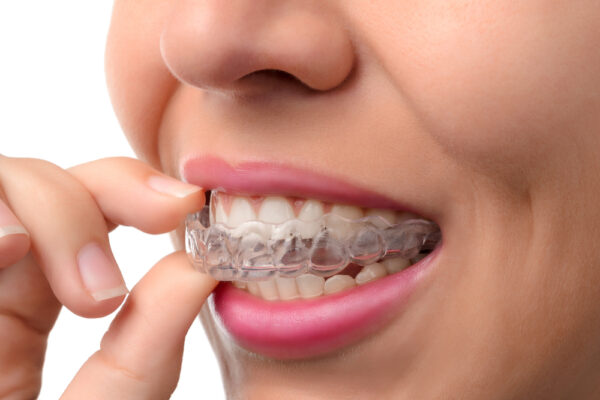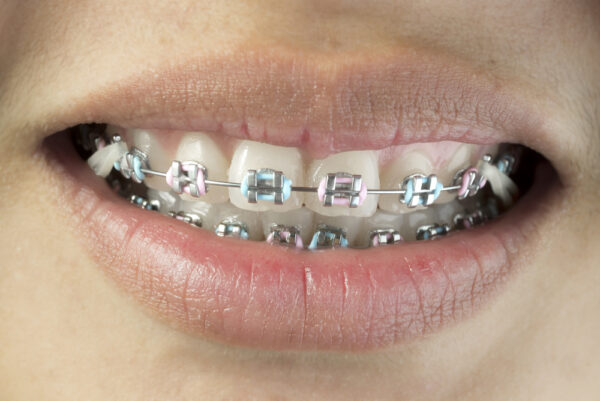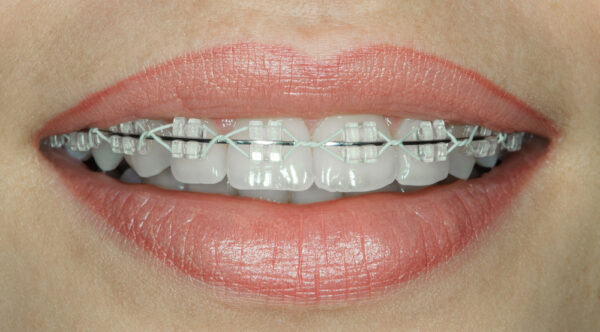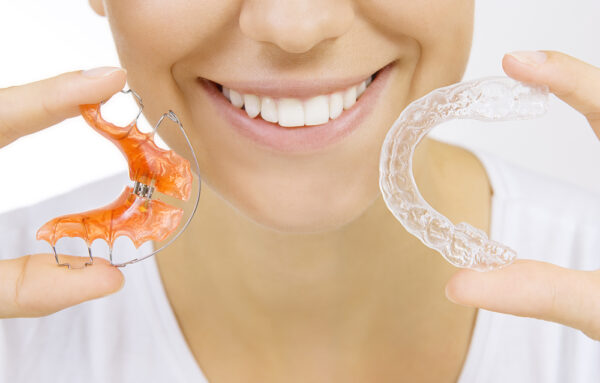Dentists can now repair your bite through a process called “occlusal Adjustment” Did you know your smile and favorite co...
Orthodontics
Book an AppointmentYour teeth are always moving, which means new problems may arise. Braces are a way to treat many dental issues, including crooked or misaligned teeth, a misaligned jaw, or an improper bite.
While typically associated with children and teenagers, braces are an option for adults as well. According to Delta Dental, over 1 million Americans over the age of 18 wear braces.
Check out below the orthodontic treatment options available in the market today. Our team of orthodontic dentists in Houston will help you choose the type of braces that are best suited for your needs.

Traditional metal braces are an effective way to treat crooked, crowded, or misaligned teeth, along with a misaligned jaw or an improper bite. If you need extensive orthodontic treatment, such as jaw realignment, metal braces are the best option for you.
Advancements in dentistry have resulted in metal braces that are smaller and more comfortable, providing you with a better overall experience.
Once your teeth are properly cleaned and prepared for the treatment, your orthodontic dentist will apply a bonding glue to the back of each metal bracket, which is then directly attached to each of your teeth. The brackets must be positioned accurately; once in position, a light is used to cure the bonding glue, securing the bracket in place.
After the brackets are attached, your orthodontic dentist will run a metal wire through the brackets and secure them with elastic bands.
The length of the procedure varies with each patient; but it isn’t painful or exceedingly long.
The dentist will periodically tighten the wires to continue straightening your teeth or realigning your jaw.
Your progress will be monitored by the dentist to help determine the length of time you will need to wear the braces.
We will provide you with instructions and tips on how to care for your teeth while wearing braces, along with foods you should avoid that could harm your braces. Pain and soreness will generally go away within a week of getting your braces. If your mouth is still sore after one week, don’t hesitate to contact our team of orthodontic specialists in Houston.

If you’re concerned about wearing metal braces, ceramic braces may be a good option for you.
Ceramic braces are similar to metal braces, but the brackets attached to the teeth are clear or tooth-colored, making them much less noticeable. These braces are more expensive than traditional metal braces, but they’re a good option for those who are concerned about the appearance of metal braces in their smile.
Ceramic braces are an option available only to adults. The brackets used in ceramic braces are larger than metal brackets and they are more fragile. Because the bands used to fix the metal wires to the brackets are clear, they are more vulnerable to staining. This type of braces requires extra attention to oral hygiene.
If you need extensive orthodontic treatment, metal braces will be a better option because they are stronger than ceramic braces. If you want straight teeth faster than Invisalign is able to provide, you should consider ceramic braces. Get in touch with an expert team of orthodontic dentists in Houston.

When you have your braces removed, the retention phase of the treatment begins. You will be fitted for a retainer to keep your teeth in alignment. Your retainers will be worn for a minimum of 24 months.
This is an important phase in the treatment because if it’s ignored, your teeth could shift out of place and require another set of braces to repair.
One of the most common types of retainers is the Hawley retainer, made of acrylic and metal wire. Made from impressions of your teeth, the retainer will fit snugly in your mouth as the wire and acrylic keep your teeth aligned.
Similar to Invisalign, an Essix retainer is a removable, transparent tray that fits over every tooth. This type of retainer doesn’t have a wire, but uses the molded trays to keep your teeth straight.
Bonded lingual retainers are permanent retainers that are attached directly to your teeth. Because they are bonded to the teeth, you must be careful when chewing; incorrect biting can break the bonding material.
Regardless of the type of retainer you choose, it’s important to clean it on a daily basis and store it in a safe, sanitary place.

Braces are a way to invest in your dental health, fixing existing issues, and potentially preventing future problems.
Traditional metal braces generally cost between $4,235 and $6,500.
Ceramic braces generally range between $4,800 and $7,000.
Check with your insurance provider to determine your coverage. Insurance companies generally don’t cover orthodontic treatment for people over the age of 18, but they may cover up to 50% of the costs for children under the age of 18.
You may want to consider purchasing supplemental dental insurance if your plan doesn’t help cover the costs.
We are committed to helping you pay for your orthodontic treatment and we will gladly work with you to set up a payment plan.
FREQUENTLY ASKED QUESTIONS
How will braces help me?

Braces work by creating gentle force in the desired direction. This force causes compression on the periodontal ligament (PDL) on one side while stretching it on the other side. On the side where there is compression, the bone is reabsorbed and on the other side, there is bone growth. Thus, teeth movement takes place due to bone creation and bone loss on different sides. Thus, the results are permanent.
Is there is an age for getting braces?

There is no age for getting braces. They can be effective in teenagers and adults. When it comes to kids, 10 to 14 is considered the best age group for getting braces because their mouth is still growing and permanent teeth are coming. It is recommended that every child should see an orthodontist for an assessment when they are 7 or 8. However, many of our patients are above 21. Braces can align your bite and increase your confidence. Your oral health benefits significantly when your teeth are straightened.
How to know if I need braces?

This depends on the structure of your teeth and mouth and what you desire from your smile. If you have concerns about any of these factors, you should schedule an appointment with our dentist. Once we examine your oral health and discuss your condition and options, we will be able to recommend whether braces can help you with your goals. The goals can include cosmetic reasons, straightening the teeth, and correcting the bite.
Do braces cause hurt?

Braces will not generally hurt. Some patients are likely to experience minor discomfort for a couple of days because their teeth, gums, and mouth have to get used to them. You may feel a little sensitive after wearing them the first time, but it goes away after they settle in. You shouldn’t feel pain when wearing braces. In a very rare case, if you experience any pain, you should call us.
How long will I have to wear my braces?

Your orthodontic problem determines your treatment time and this determines how long you will have to wear your braces. The severity of your problem and the type of braces used also affect the duration. Usually, patients wear them from 12 to 30 months. When it comes to children, the duration varies based on the problem and the child’s oral growth. Interestingly, good oral hygiene, follow-up appointments, avoiding certain foods, and using auxiliaries also affect the time.
How often should I brush my teeth after wearing braces?

Those with braces are recommended to brush their teeth at least 3 times a day. You should brush every time you have had food. It is important to remove any food that gets caught between the braces. It is also recommended to floss daily to reach areas where your brush cannot. Once we place your braces, we will guide you on how to brush and floss effectively.
Will braces interfere with my activities?

Braces do require a little time to adjust when you first wear them on. Once they have settled in and you get used to them, they will not interfere with your activities. You can even continue with your singing practice without any interference. Whether you like to play instruments or engage in contact sports, you can continue with them after the initial adjustment. It is recommended to put on a mouthguard when you play some contact sport.
Will I need dental checkups after wearing my braces?

Braces are a type of orthodontic treatment. It will be required to visit your dentist regularly after you put them on. Even when you brush and floss as per recommendations, food can get caught in areas where brushing and flossing cannot reach. Part of the regular checkup is to clean such areas to prevent bacterial build-up that can otherwise cause cavities, gum disease, and gingivitis. Appointments are usually held 4 to 8 weeks apart to check progress and adjust the braces.
Are there any eating limitations with braces?

- Hard foods
- Crunchy foods
- Chewy foods Sticky foods
- Sugary foods
What happens after my braces are taken off?

The brackets and wires will be removed using special tools and the process will not hurt at all. We will remove any leftover polishes or adhesive on the teeth before you can view your beautiful new smile. You will be required to wear a retaining to help retain your teeth in their position. Only clear and comfortable retainers are used that are unnoticeable.
Schedule an Appointment with us
Related Articles
Occlusal Adjustment: Key to Improving Your Bite

Children's Braces: Understanding the Process and Benefits
It’s hard enough being a teenager without having to worry about your teeth. At that age, their mouths are growing incredibly qui...

Best Foods To Eat With Braces
Over 4 million Americans wear braces every year to achieve straighter and healthier teeth. If you are one of the many patients see...
